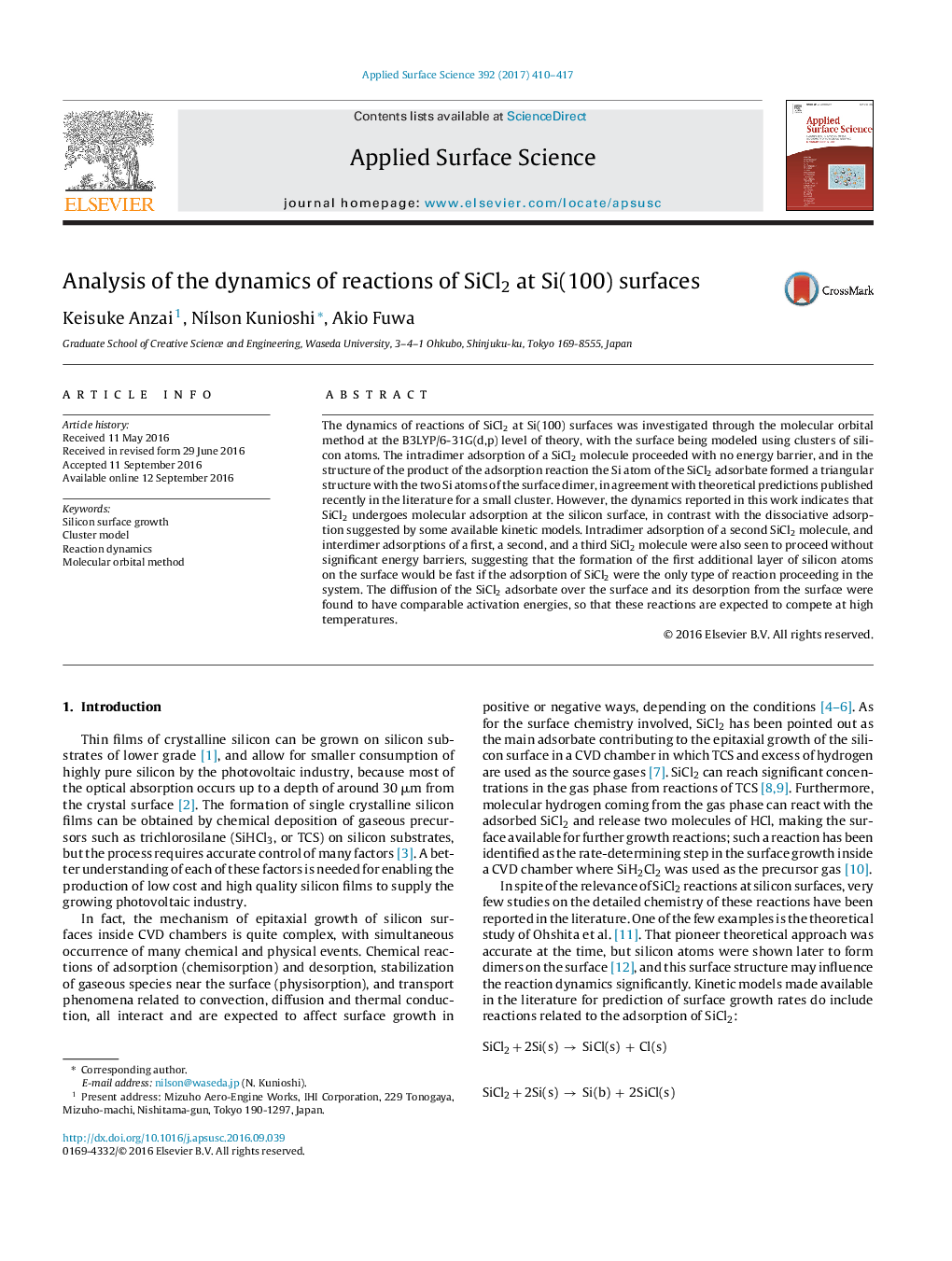| Article ID | Journal | Published Year | Pages | File Type |
|---|---|---|---|---|
| 5354655 | Applied Surface Science | 2017 | 8 Pages |
Abstract
The dynamics of reactions of SiCl2 at Si(100) surfaces was investigated through the molecular orbital method at the B3LYP/6-31G(d,p) level of theory, with the surface being modeled using clusters of silicon atoms. The intradimer adsorption of a SiCl2 molecule proceeded with no energy barrier, and in the structure of the product of the adsorption reaction the Si atom of the SiCl2 adsorbate formed a triangular structure with the two Si atoms of the surface dimer, in agreement with theoretical predictions published recently in the literature for a small cluster. However, the dynamics reported in this work indicates that SiCl2 undergoes molecular adsorption at the silicon surface, in contrast with the dissociative adsorption suggested by some available kinetic models. Intradimer adsorption of a second SiCl2 molecule, and interdimer adsorptions of a first, a second, and a third SiCl2 molecule were also seen to proceed without significant energy barriers, suggesting that the formation of the first additional layer of silicon atoms on the surface would be fast if the adsorption of SiCl2 were the only type of reaction proceeding in the system. The diffusion of the SiCl2 adsorbate over the surface and its desorption from the surface were found to have comparable activation energies, so that these reactions are expected to compete at high temperatures.
Related Topics
Physical Sciences and Engineering
Chemistry
Physical and Theoretical Chemistry
Authors
Keisuke Anzai, NÃlson Kunioshi, Akio Fuwa,
